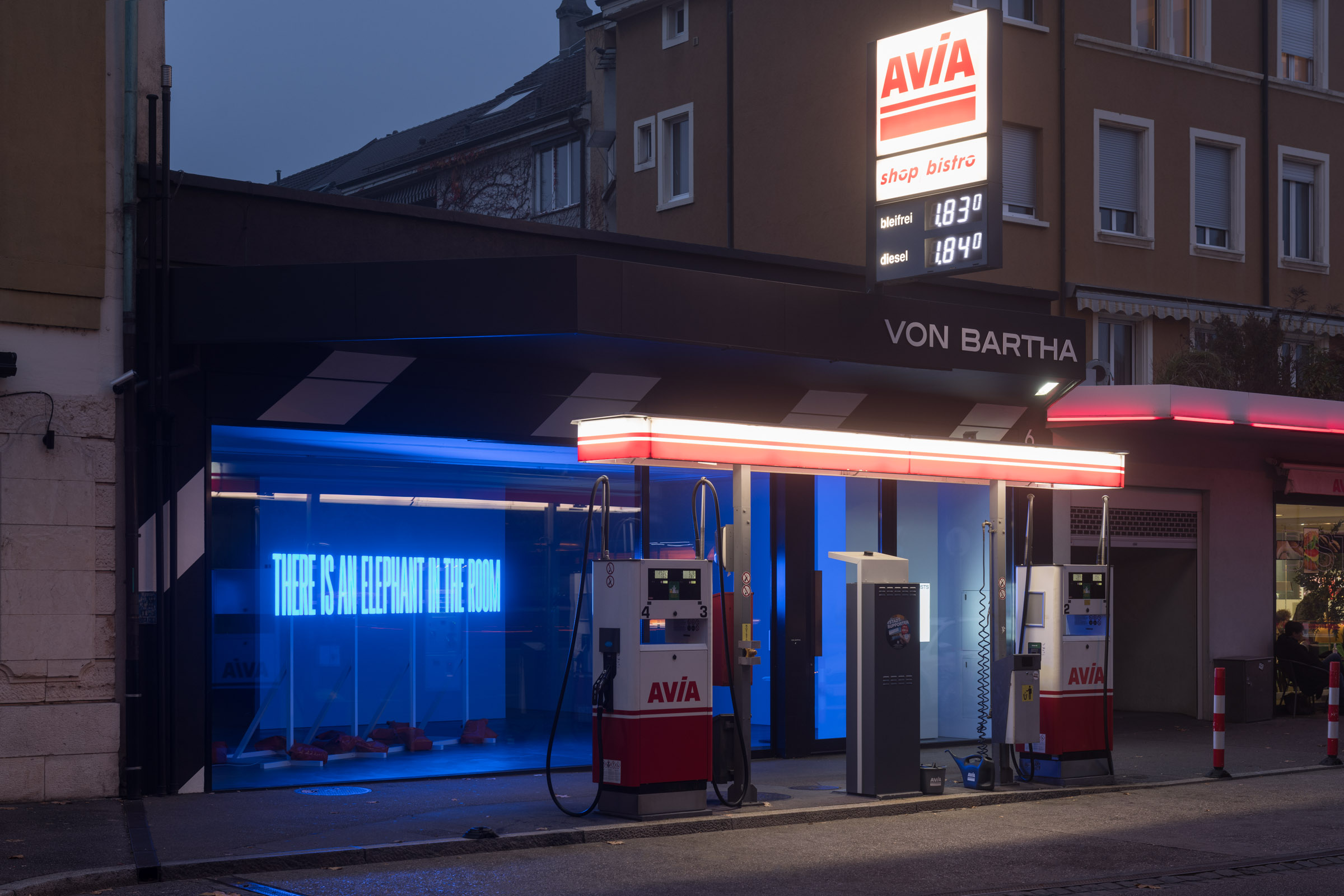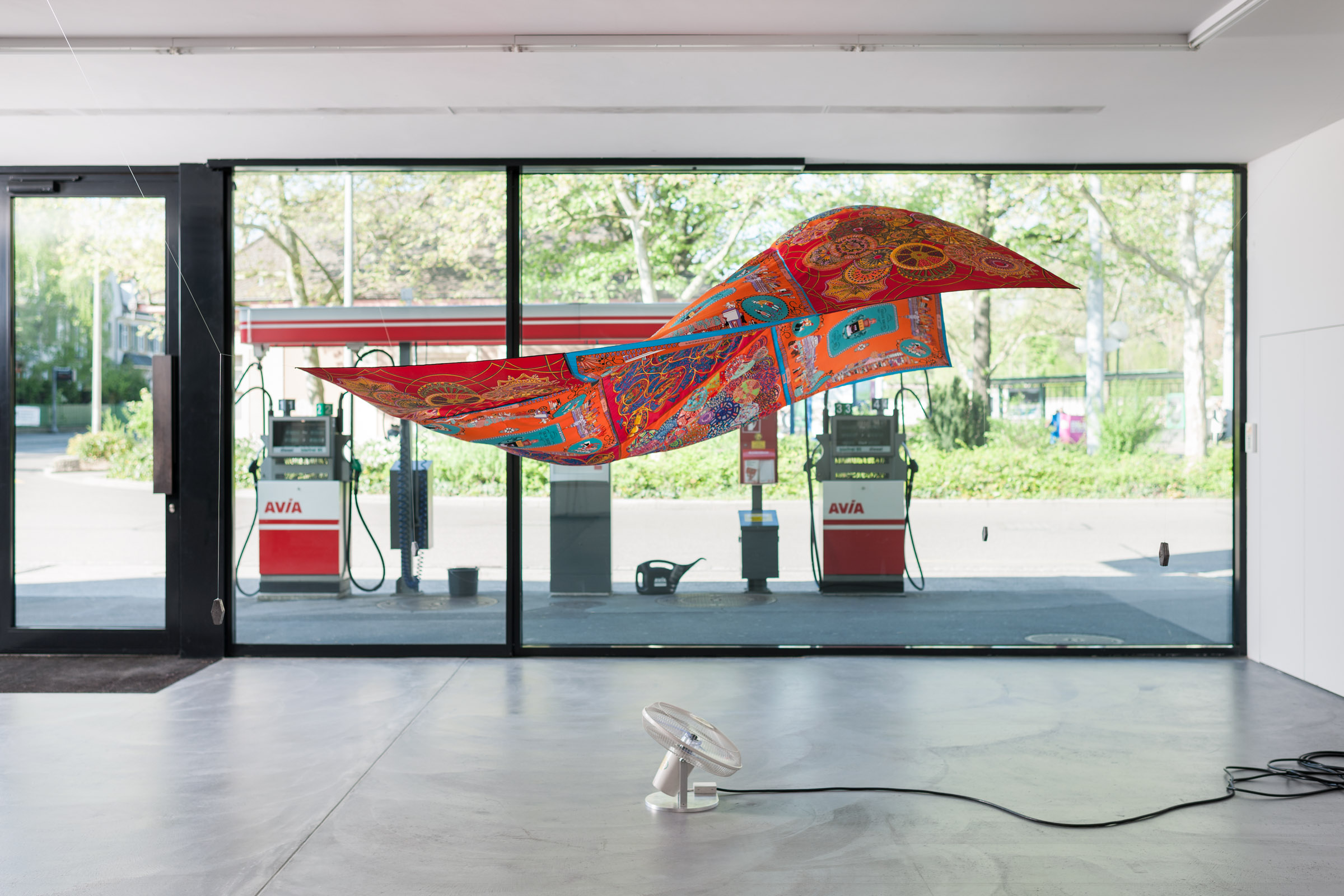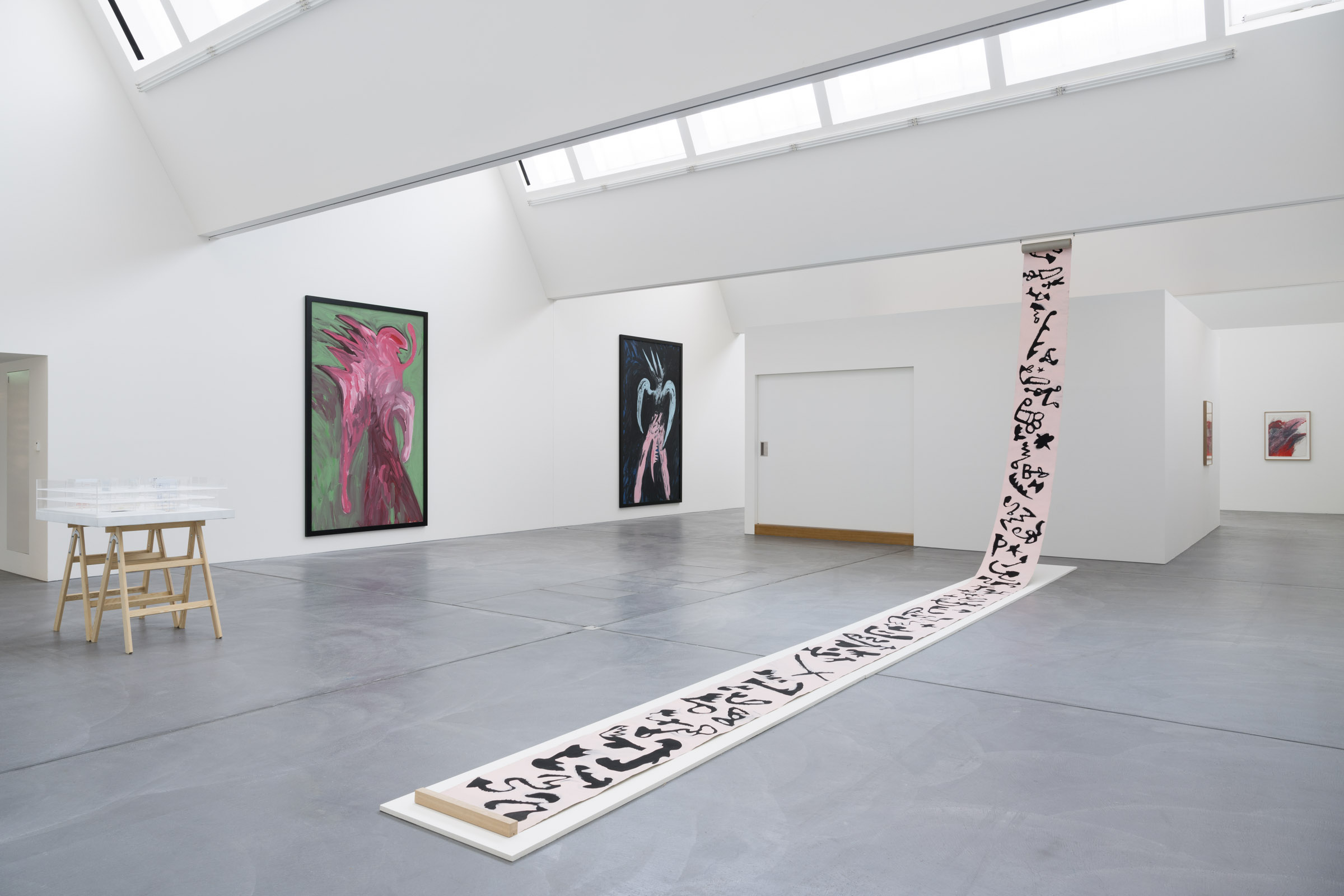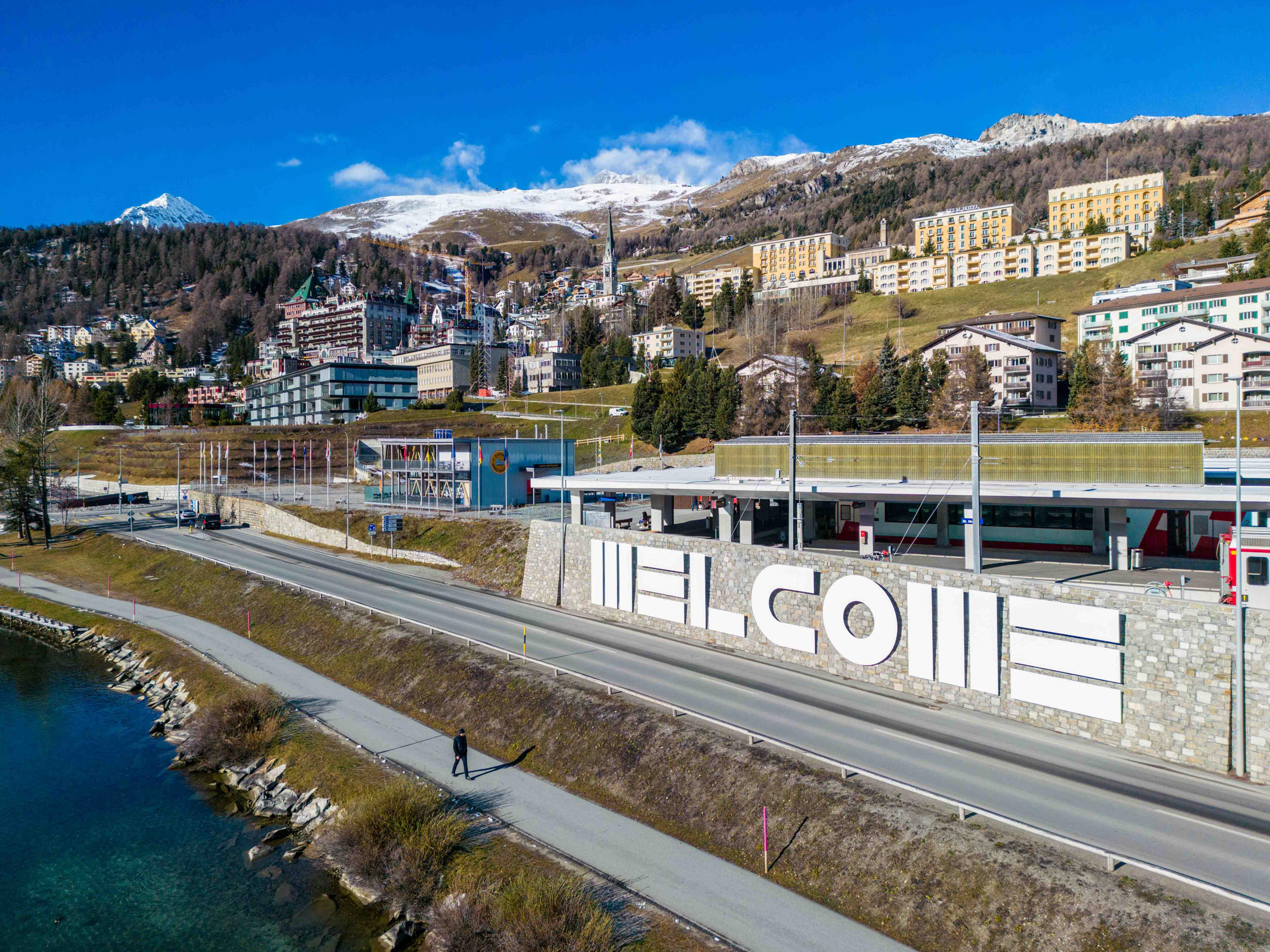An Artwork We Love: Superflex’ Hospital Equipment

Patrons of the arts Sandy and Gabriel Eckenstein tell the story of how a thought-provoking work by Superflex still captivates them as it went from ready-made to functional!
Some of the artworks that we’ve been lucky enough to live with were pieces that we’ve been immediately attracted to, sometimes without knowing anything about the artist or even necessarily the intended meaning behind it. They have just spoken to us, hit us viscerally. Learning more about the work and artist typically then deepens our appreciation of the artwork. We’ve been drawn to other pieces primarily because of the story attached over any aesthetic considerations. A large scale photograph of Hospital Equipment by Superflex falls firmly into that second category for us.
Through our friendship with the von Barthas, we’ve had the pleasure of getting to know some of the members of the artist collective Superflex. We have long admired their work, not just for aesthetic reasons, but more importantly for the messages that they convey and the good that the group is trying to do in the world, not just in the art world. We are fortunate to be living with one of their seemingly more light-hearted works – a neon with the phrase Every Dog Has Its Day. Of course with Superflex, there is always a deeper story beyond first impressions. But that’s another story…
The initial incarnation of Hospital Equipment consisted of an operating table, equipment tray and light that were installed at von Bartha’s former gallery space in S’chanf in the Engadine. For the second incarnation, photographs were taken of the installation and once the exhibition was over, the equipment was sent to be used in a hospital in a conflict area. The capital raised from the sale of the photographs funded the equipment itself, the transportation, as well as the installation on site. We are told that one is currently in use in The Salamieh Hospital in Syria and another in the Al-Shifa Hospital in Gaza, Palestine.
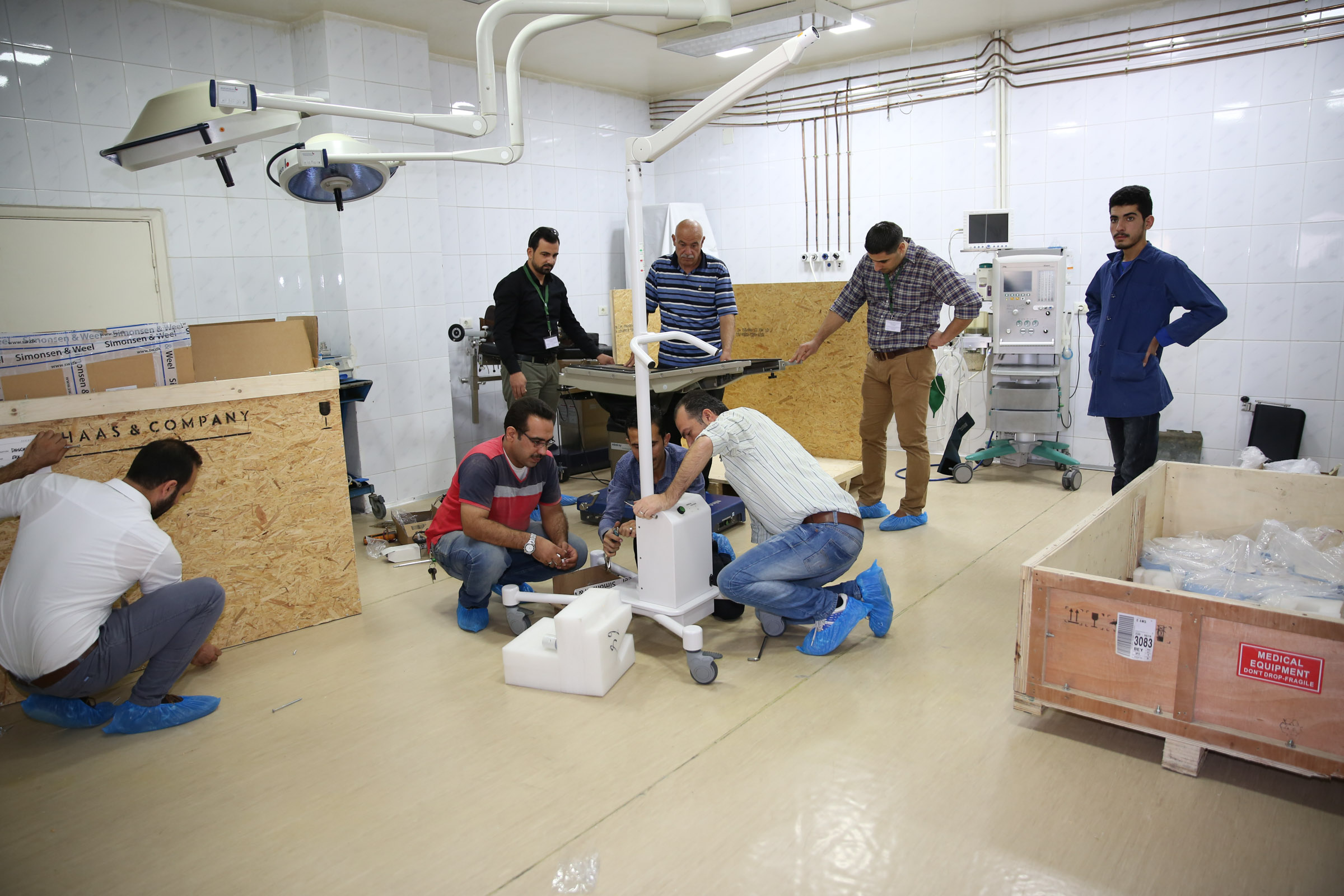
Photos courtesy of Mr. Ali Shahin

The image is stark, but beautifully photographed. The lighting and the composition are aesthetically pleasing, but the subject matter is intrinsically uncomfortable. Perhaps no one but a surgeon feels at ease in such a setting. So, the inherent conflict between the beauty of the depiction and the discomfort of the theme gives us an interesting dichotomy and we feel this each and every time we look at this work. We also appreciate how it fits within the cannon of art history. Duchamp’s idea of the ready-made – everyday objects such as a urinal were declared to be art works because Duchamp was an artist and if he said it was art, then it was art. Period. Superflex begins with this idea – calling functional operating equipment a work of art. But then they subvert the idea by turning the artwork back into the functional. Of course, the last but definitely not the least aspect of our appreciation of the work is knowing that we have helped to fund something potentially lifesaving. It may not be altruism, since we get to live with this wonderful thought-provoking work, but it still makes us feel good.
The image of Hospital Equipment now lives in our library, this minimalist work is set in a cozy room filled with books and diagonally across from my desk. It is a work that I look up at often when I am struggling to find the right word or come up with an idea. We know that this is not one of our forever art works. There will come a time when we part with it for someone else to enjoy, and will earmark those funds to do more good in the world.

Hospital Equipment, 2017
Fine Art Print on archival paper mounted on dibond and framed
119 x 158 cm (framed)
123 x 163 cm (unframed)
Ed. 3/3, each unique
